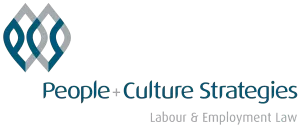Following on from the Federal Government's introduction of the Coronavirus Economic Response Package (Jobkeeper Payments) Amendment Bill 2020 (Cth), the Federal Government has also introduced the new rules which apply under the JobKeeper Scheme. Under the Coronavirus Economic Response Package (Payments and Benefits) Amendment Rules (No. 8) 2020 (the "Amended JobKeeper Rules"), there is a "tapering off" of the Jobkeeper payment rates and a new test that employers must meet to be eligible for JobKeeper payments.
New JobKeeper rates and reference period calculations under the Amended JobKeeper Rules
Under the Amended JobKeeper Rules there are two periods under which different rates of JobKeeper payments apply.
During the period of 28 September 2020 to 3 January 2021 (the "First Period") the applicable JobKeeper payment rates are $1,200 (for those employees who work 80 hours or more during the reference period) and $750 (for those employees who work less than 80 hours during the reference period).
During the period of 4 January 2021 to 28 March 2021 (the "Second Period") the applicable JobKeeper payment rates are $1,000 (for those employees who work 80 hours or more during the reference period) and $650 (for those employees who work less than 80 hours during the reference period).
The Amended JobKeeper Rules have introduced the notion of a "reference period", which is used to determine whether an employee is eligible for the higher or lower amounts of pay. The applicable reference periods are:
- the 28-day period ending at the end of the most recent pay cycle for the employee that ended before 1 March 2020; or
- the 28-day period ending at the end of the most recent pay cycle for the employee that ended before 1 July 2020.
Employers are required to determine the number of hours that count towards the calculation during the reference period, which comprises of the actual hours the employee worked, and any hours for which they received paid leave (e.g. annual, long service, sick, carers and other forms of paid leave) or paid absence for public holidays.
The calculation of hours during the reference period will generally only be relevant for part-time or long-term casual employees, as full-time employees who continue to work full-time hours are generally expected to have worked the minimum number of hours for the purposes of being eligible to receive the higher rate of the JobKeeper payment.
Additional test for employer eligibility
Under the Amended JobKeeper Rules employers will have to meet the original decline in turnover test as well as an additional test for the First Period and Second Period.
Under the additional eligibility test for the First Period employers must demonstrate that their actual GST turnover has declined by the required percentage for the quarter ending 30 September 2020 (either 15 per cent, 30 per cent or 50 per cent depending on the turnover of the business and whether it is a registered charity).
For the Second Period, employers must have met the original decline in turnover test and also had the required actual decline in turnover for the quarter ending 31 December 2020 (either 15 per cent, 30 per cent or 50 per cent depending on the turnover of the business and whether it is a registered charity).
The Amended JobKeeper Rules and explanatory statement can be accessed HERE and HERE.
Key takeaways
- Under the Amended JobKeeper Rules there are new JobKeeper rates which apply depending on the hours of work by employees.
- The applicable rates are calculated by determining how much employees worked during the applicable "reference periods".
- There is an additional decline in turnover test that employers must satisfy in order to receive JobKeeper payments.
The content of this article is intended to provide a general guide to the subject matter. Specialist advice should be sought about your specific circumstances.
